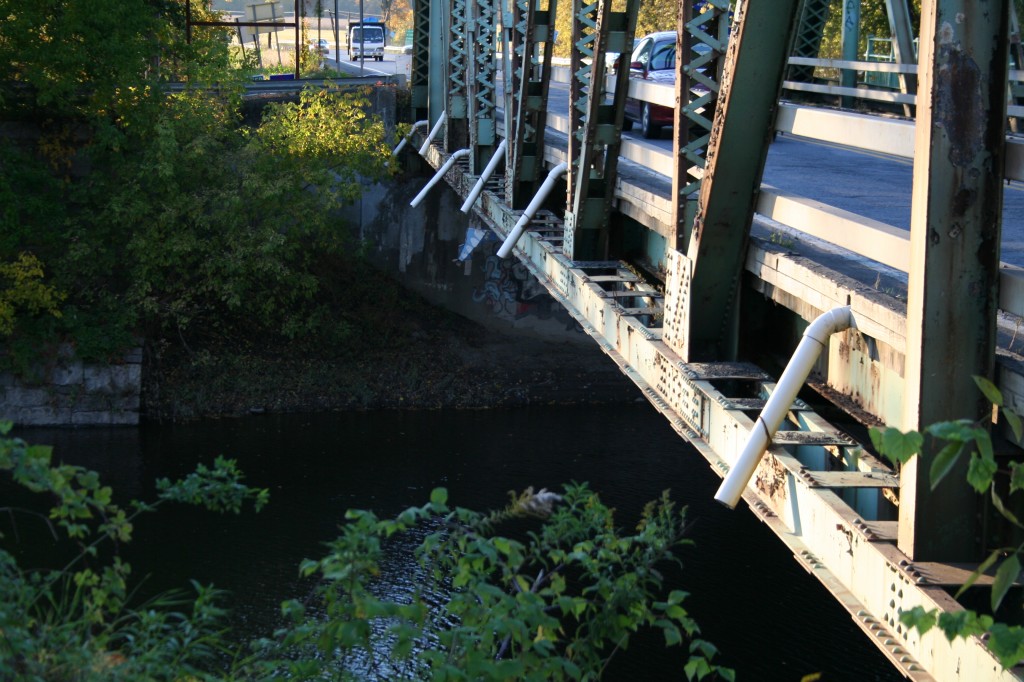

Having been endowed with a $540,000 grant from New York State, the Village of New Paltz is preparing to embark on a project that will include replacing the “double-barrel sewer liner” and reconfiguration of an intersection of sewage flows.
According to Bleu Terwilliger, superintendent of public works for the Village of New Paltz, plans for the project are in the very early stages.
“We have to do some investigative work, and then our engineer has to come up with the design work, and it’s got to be approved by the [Department of Environmental Conservation (DEC)],” Terwilliger said. “And then we can go ahead and move forward with the project.”
Village of New Paltz Mayor Terry Dungan said the double-barrel sewer liner was installed in the 1950s. It was made with cast-iron, which he said is brittle and was eight inches in diameter. While this installment worked in the past, increased development and 60 years of aging have prompted the village to address the fact that wider liners are necessary to accommodate a greater capacity.
The village intends to reconfigure an intersection of sewage flows from lines coming down Main Street, Water Street and Huguenot Street.
“The sewage flow from Main Street actually goes against the sewer flow from Water Street,” said Dungan. “But instead of Main Street and Water Street merging together and going into the Huguenot Street line, it creates a backup.”
The sewage issues the town has were first discovered in 2002 by the Hudson Riverkeeper, Dungan said.
“[The Hudson Riverkeeper] became aware that the Village of New Paltz was experiencing sewer overflows during heavy rain incidents, which means that raw sewage . . . would flow down the street, and into the storm water system into the river,” said Dungan.
Because of this, the DEC issued a “consent order” to put pressure on the village to fix the problems, he said. The village has to report to the DEC annually to show what has been done in a given year to avert this from happening.
The consent order, however, worked in the village’s favor, according to the mayor.
“It’s beneficial to us . . . because when we go to apply for grant money, the fact that we are under a consent order is . . . a qualification that makes us more eligible for money to support the work,” he said.
The DEC has instructed the Village of New Paltz to look after “I&I,” or inflow and infiltration, which Dungan explained as a way of measuring “the extent to which rain water is getting into your sanitary sewer.”
One method the village plans to use to assess the sewer line is to run a camera through it.
“Then you go to the DVD and see what kind of condition things are in,” Dungan said. “We’re looking at connections, we’re looking for cracks. If you have a crack in the line, you’ll see water leaking into the sewer line.”
Terwilliger said that sewage issues such as these are not out of the ordinary for a municipality.
“Due to the age and the time frame when it was put in, our system is very undersized and we haven’t kept up with development or replacement for future expansion, which has obviously happened over the years,” he said. “I mean, it was just the technology they used back then. There have been upgrades in technology since this was first installed.”
According to Dungan, the grant money from the state will “deal with the primary portions of our sanitary sewer collection system.” He said the village has applied for additional grants that will help fund more projects within the collection system.
“We obviously have to apply for more grant money and so forth,” said Terwilliger. “Five-hundred thousand dollars doesn’t get you very far.”
